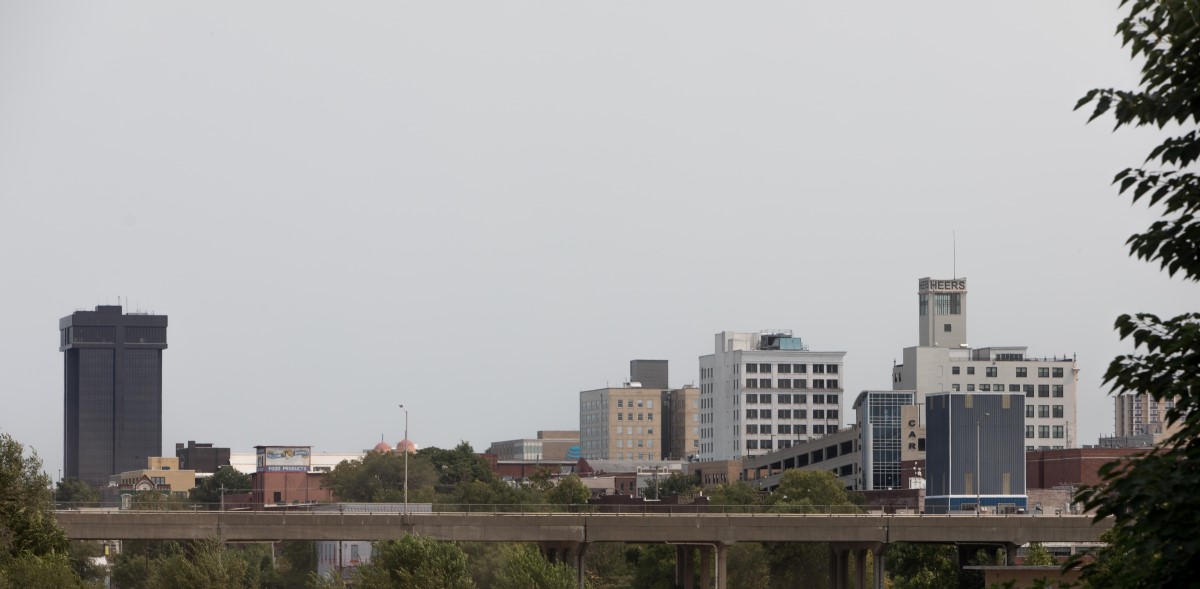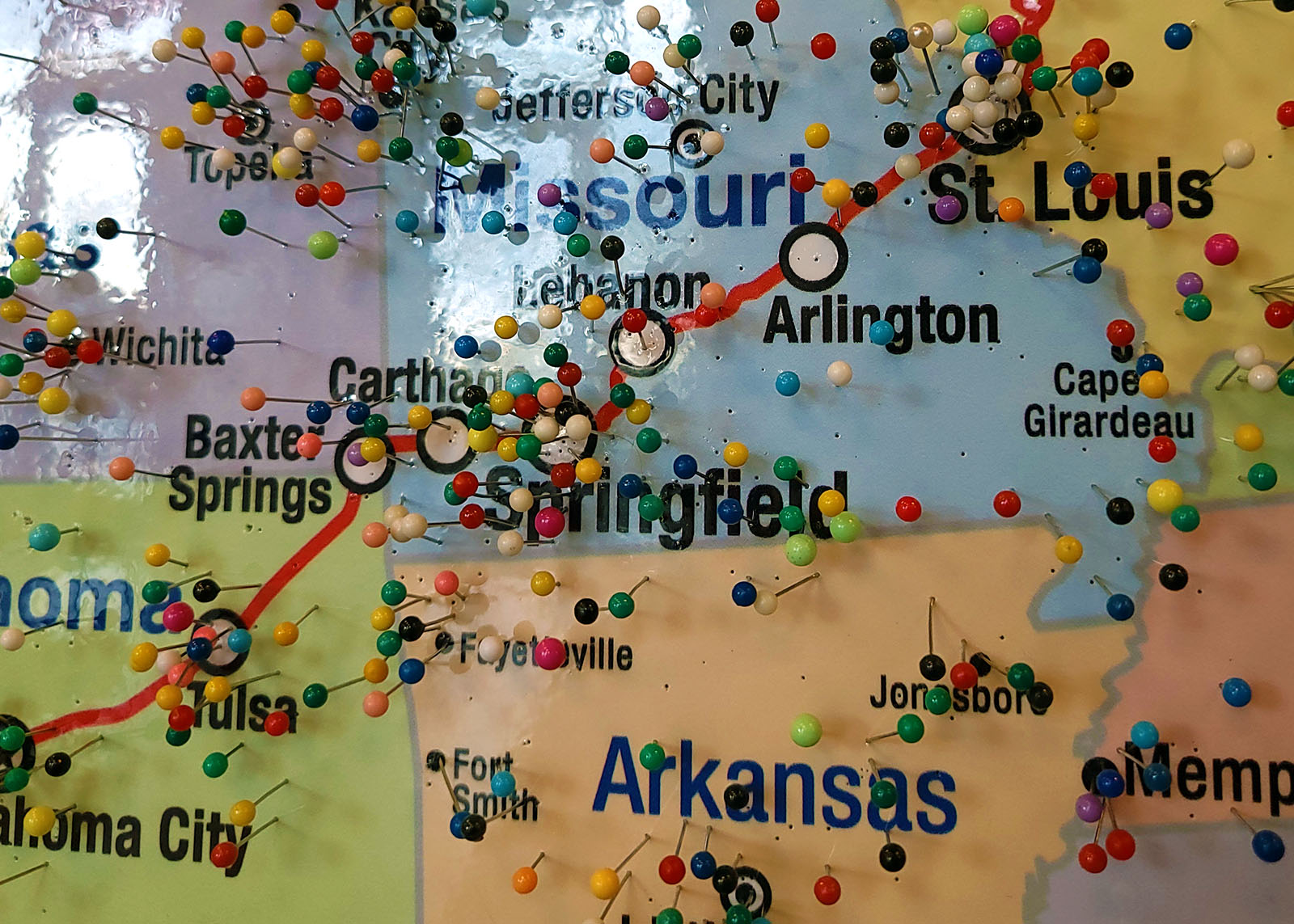As Springfield and the larger metropolitan area look at different ways to promote growth and find solutions to the problems the region faces, the collaborative spirit of Northwest Arkansas can provide insight into how to do so together.
Following a December visit by 80 local business and community leaders to Northwest Arkansas, the Springfield Area Chamber of Commerce wanted to reiterate the lessons learned at the Springfield Business Development Corporation’s (SBDC) annual meeting.
The SBDC, the economic development arm of the Chamber, hosted Mike Malone, the vice chancellor of economic development at the University of Arkansas, as the keynote speaker at the yearly event at the Oasis Hotel and Convention Center on Feb. 22.
Malone, with a long job history in the federal government, including working in the White House under the Clinton administration and for FEMA, is a NW Arkansas native, and watched its growth in population, business and tourism over the years.
“Northwest Arkansas has kind of grown up in a linear fashion with Bella Vista, Bentonville, Rogers, Lowell, Springdale and Fayetteville all along this north-south corridor,” Malone said at the event. “…Each of those cities has its own base of industry, or its own educational institutions anchored there.
“Each of those would be fine if the other cities weren’t lined up next to them, but they’re a heck of a lot better off because they have those neighbors that have other assets and attributes to offer and sell and promote.”
Malone thinks Springfield, which shares some similarities with NW Arkansas, should lean into collaborative efforts with surrounding communities to promote the larger region.

The Springfield region has made progress, with progress to be made
Prior to Malone’s speech, Vicki Pratt, the Chamber’s senior vice president of economic development, highlighted some of the wins and losses the Springfield region experienced in 2022.
Despite the various opportunities, in the form of new businesses, jobs and investments that have made their way to the Springfield region in the last year, and the momentum going forward, there is still plenty of progress to be made.
Pratt said they had multiple investors that opted to take their business elsewhere in 2022 because Springfield didn’t have the resources they needed.
“In fact, we were eliminated from the competition of 22 projects last year,” Pratt said. “…That's why we made building our competitive capacity a key strategy and our five-year strategic plan. We have to have a product to sell. It’s a hurdle for our region that needs to be addressed.”
Springfield shares similarities, differences to NW Arkansas
Following the trip taken by Springfield leaders to NW Arkansas, Fargo, North Dakota also wanted to see what they were doing right. Malone said the leaders from Fargo expressed similar concerns to those of Springfield — they don’t have the same resources as NW Arkansas.
Between Walmart, Tyson Foods, J.B. Hunt Transport Services and Murphy USA, NW Arkansas houses numerous headquarters of some major U.S. companies. But Malone emphasized that that wasn’t always the case.
“In 1990 and even when I was working with the Northwest Arkansas Council, they weren’t putting big dollars into projects…the resources were still scarce, those companies were trying to get going,” he said. “But they knew they had to chip in some and hire that staff to get things rolling.”
Malone said that NW Arkansas’ early success is primarily attributed to federal and state funding, philanthropy and coordination with local entities to get involved in different projects, and he doesn’t see why the Springfield region can’t find a similar path.
He also pointed out that while Springfield serves as a core city and is far larger than any in NW Arkansas, the share of their respective metropolitan statistical area populations by the four largest cities were similar. Fayetteville, Springdale, Bentonville and Rogers made up 55.4 percent of the NW Arkansas MSA in 2022, and Springfield, Nixa, Ozark and Republic made up 48.9 percent. This shows that, for both regions, cooperation with smaller communities, which still make up a significant amount of the total MSA population, is key for growth.
Malone stressed that, in order to foster a collaborative relationship with surrounding communities, Springfield needed to be sensitive about how it’s portrayed.
As an example, he provided a quote he came across that used the phrase “Springfield and its surrounding communities.”
“‘Its’ is a possessive, “ he said. “…You’re building a regional coalition. Springfield’s big, but everybody else has a lot to bring to the table, too, and it’s not like Springfield has possession of the surrounding communities or anything like that. I kind of recoiled when I saw that written somewhere.”

Why regionalism matters, and how to begin promoting it
Malone acknowledged that because Springfield and NW Arkansas were organized differently, things that worked in one place wouldn’t necessarily work in the other. But in order to procure a collaborative, regional spirit, establishing foundational principles is vital.
Metropolitan areas often are evaluated based on just that, their metro areas, not just the core cities or largest suburbs. He suggested that national lists of MSAs, while they don’t usually paint the full picture, were an indicator of how well a region is doing, and help establish a reputation.
So finding a brand, and building on it with surrounding communities, is vital for regional growth.
For example, billboards promoting NW Arkansas can be found across their neighboring state of Texas all the way to Seattle, according to Malone.
Additionally, Malone said it was crucial to ensure the region has clear goals and a mission in how to promote itself and allocate personnel and resources to help advance them across the region’s communities.
While growth and emigration are a big part of regionalism, Malone emphasized that it is key to not fail to consider the people that already live and work in the region.
“Probably the most important reason about why we need to work regionally is what your customer base wants,” Malone said to the audience. “I know we’ve got a lot of businesspeople in the room, I know we’ve got some elected officials in the room. Think about your customers and your constituents.”
Malone said that he’s excited to see where Springfield goes, and reiterated that working with all of the stakeholders and communities in the region, and finding a win-win opportunity would help spur regionalism in the Springfield area.
“We’ve got to get it right, and we’ve got to get it right together,” he said.

